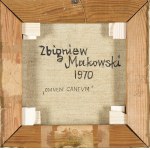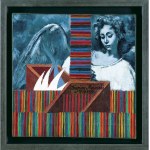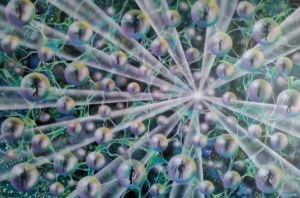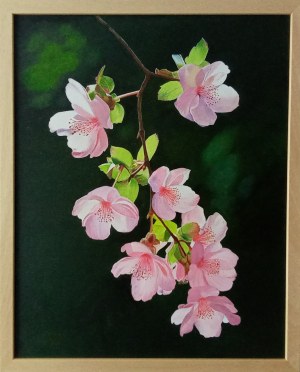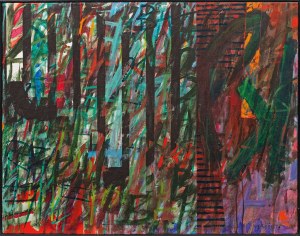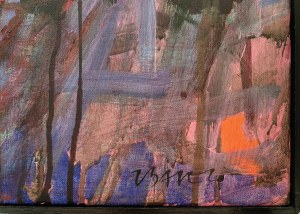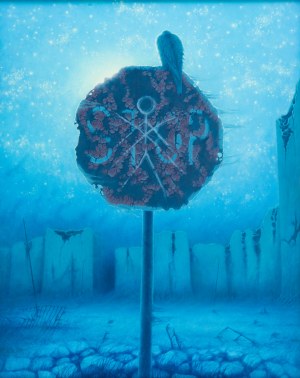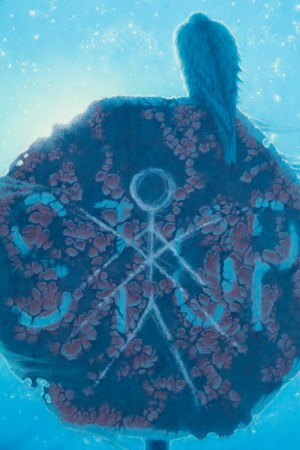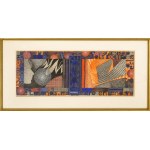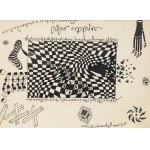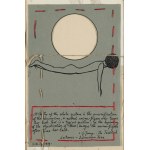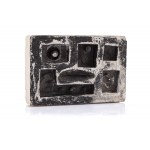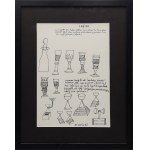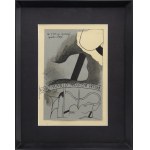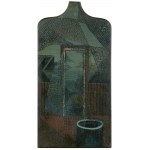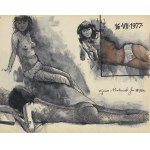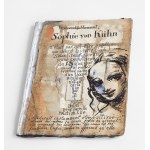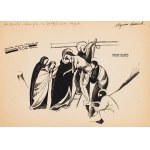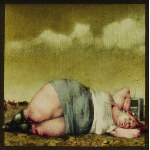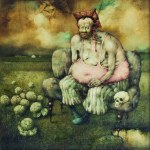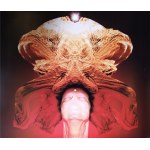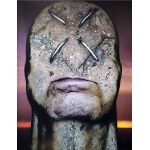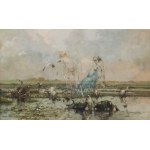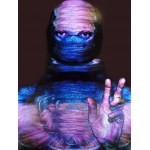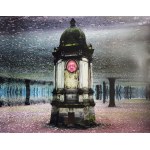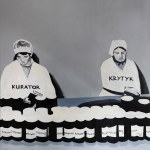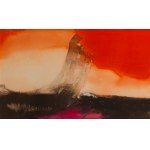27.0 x 27.0cm - oil, canvas signed in the center of the composition: Zbigniew Makowski | 1970-1977
signed on the reverse on canvas: Zbigniew | Makowski | 1970 | "OMNEM CANTUM".
on the p. strip of the loom lead: 27 x 27
Over the years, Zbigniew Makowski built his own cosmogony in his paintings, in which rich symbolism was seen. In his early work, compositions of arrangements of horizontal, vertical and circular lines already included signs, letters and words. Around 1970, Makowski's paintings had a particular density of decorative forms, which the artist then gradually replaced with forms placed against a neutral background or in a landscape he had imagined. Labyrinths, tilted wickets, fragmentary constructions appeared. In the early 1970s, there was a deepening of the three-dimensionality of forms and the reality of landscape and space in Makowski's paintings. Naturalistic representations began to neighbor abstract forms.
Analyzing the works of Zbigniew Makowski, critics wrote a lot about the symbolic layer of his paintings, trying to interpret them and find keys to these compositions. However, the artist himself, in one of his statements, pointed to other motivations that were important to him when creating his paintings: I simply want to put the person viewing my painting into a state of ecstasy, an emotional stirring different from the emotions he experiences every day. Because this is an indispensable part of the aesthetic experience. In any case, then, what my painting carries is not an explicitly coded statement. And the objects it shows are not symbols. Although they are persistently taken that way. (...) I treat my painting as an invitation to my own seeing, experiencing,understanding and dreaming of the world. (...) Only the one who thinks, dreams, delights and surrenders to the irrational will most fully experience a work of art (Where surprises await.... With Zbigniew Makowski interviewed by Krystyna Nastulanka, in Polityka No. 51, 23 . DECEMBER 1978).
The uniqueness of Zbigniew Makowski's painterly calligraphy was emphasized by many critics. Agnieszka Ławniczakowa wrote: Makowski's paintings are woven with equal purity and precision in every last detail. One will not find in them vague, undefined places. And despite his seemingly obsessive, almost exactitude in filling the entire surface with drawing, the artist's works have nothing of a dry methodicalness, but on the contrary - they charm with finesse and charm (Agnieszka Ławniczakowa, Exhibition of paintings by Zbigniew Makowski, in "Nurt" No. 5, V 1966).
♣ to the price auctioned, in addition to other costs, will be added a fee resulting from the right of the artist and his heirs to receive remuneration in accordance with the Act of February 4, 1994 - on Copyright and Related Rights (droit de suite)
Zbigniew Makowski (Warsaw, 31 I 1930 - Warsaw, August 19, 2019) studied at the Academy of Fine Arts in Warsaw from 1950 to 1956, receiving his diploma in the studio of Kazimierz Tomorowicz. Initially he leaned towards Surrealism - during his stay in Paris in 1962 he came into contact with André Breton and the international Phases movement. However, the decisive influence on the expression of his art came from the non-painterly interests he pursued. He is literate, poetic, erudite, especially an expert in the broad spectrum of philosophy and secret knowledge of many cultures. He uses this expertise in his paintings, drawings, as well as in unique books, which he makes with his own hands on specially prepared papers. In his works he layers symbols, quotations and meanings into a seemingly unreadable chaos. However, one should believe critics who claim that Makowski's works open up a world of peculiar narrative for the patient and intellectually prepared "reader." In turn, the artist himself draws attention to the "permutation" structure of his works, in which various quotations and cultural references are intertwined with his private iconography. Be that as it may, it is certainly possible to distinguish a certain visual-symbolic "alphabet" in Makowski's works, the elements of which constantly appear in them in various configurations. These include, for example, such images as a key, ladder, well, mandala, chalice, etc. They are surrounded by inscriptions, often in Latin, as well as single numbers, letters and ornaments. Someone described them as rebuses of great beauty, which can be read, and can also be contemplated. Since 1982, the artist stopped exhibiting, but not creating. At that time, works were created that were a kind of modern notebook, started back in the 1960s, to which the artist returns with new thoughts. The artist is the recipient of many awards, including the Norwid Art Criticism Award (1973) and the Jan Cybis Award (1992). His large composition "Mirabilitas secundum diversos modos exire potest a rebus" (1973-1980) adorns the Geneva headquarters of the United Nations as a gift from the Polish government.
Recently viewed
Please log in to see lots list
Favourites
Please log in to see lots list




